Section 3.6. Impact of Frequency Distortion on Discrete Channel Modeling
|
3.6. Impact of Frequency Distortion on Discrete Channel ModelingOne major assumption with the traditional wideband channel model is that the received signal is simply the sum of scaled and time shifted versions of the LOS pulse (see Equation (3.46)). In general, this is not the case for UWB signals. Instead, the received signal will be the sum of distorted and time shifted pulses. Pulse distortion occurs due to the pulse passing through materials that are frequency dependent, from diffraction [62] or from the antenna itself (that is, the pulse emitted by the antenna is not necessarily consistent over all transmit/receive angles). In this section, we examine the impact of using a discrete-tap channel model in the presence of per path distortion or other channel effects which violate the assumption that the received signal is simply a scaled and time shifted version of the LOS signal [74]. 3.6.1. The CLEAN AlgorithmIn obtaining a UWB channel model, often the first step is to extract the channel impulse response (CIR) from individual measurements. The CLEAN algorithm, first introduced in [33] and well-established in the radio astronomy and microwave communities, is often applied to UWB measurements [34-36]. The CLEAN algorithm is often preferred because of its ability to produce a discrete CIR in time.In other words, it assumes that the channel is a series of impulses, consistent with the tapped-delay line channel model [8]. To extract the CIR from measurements of the received waveform y(t), we first need to take an LOS measurement to obtain the template for the CLEAN algorithm. The algorithm searches the received waveform iteratively with the template to find the maximum correlation [5]. The steps involved are:
3.6.2. Impact of Frequency Dependent DistortionDue to the extremely wide bandwidth of UWB pulses, pulse distortion can occur when a pulse passes through materials that are frequency dependent. Several materials were characterized in [60] and [62]. The impact on the output of the CLEAN algorithm is examined here. As an example, consider a pulse passing through plywood. The nondistorted 2 GHz-wide pulse is plotted in Figure 3.39. The received pulse after passing through a brick wall and the reconstructed pulse using the CLEAN algorithm are plotted in Figure 3.40 (left and right, respectively). As can be observed, the pulse is significantly distorted, and CLEAN represents the distortion very well. However, as shown in Figure 3.41, which plots the impulse response determined by CLEAN, it must use multiple channel taps to do this despite the fact that only one path exists. This clearly biases the number of "paths" reported. Similar plots for wallboard, cloth partition, a wooden door, concrete blocks, styrofoam, and plywood are given in [66]. In many cases, the frequency distortion is significant, resulting in many additional "paths" as interpreted by CLEAN. Thus, the discrete channel model can be used to represent path-specific distortion. However, the model must include "phantom paths" in order to accommodate the distortion. Care must be taken when using such a model when pulse distortion is expected because we must interpret the model output correctly. Figure 3.39. Simulated LOS Pulse.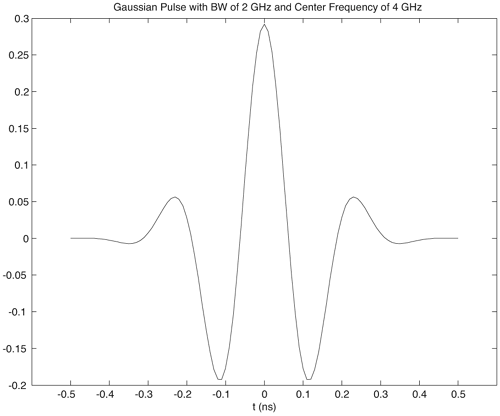 Figure 3.40. Distorted Pulse and CLEAN Estimated Pulse after Passing Through a Brick Wall.SOURCE: B. Donlan and R. M. Buehrer, "The UWB Indoor Channel: Large and Small-Scale Modeling," submitted to IEEE Transactions on Wireless Communications [73]. © IEEE, 2004. Used by permission. 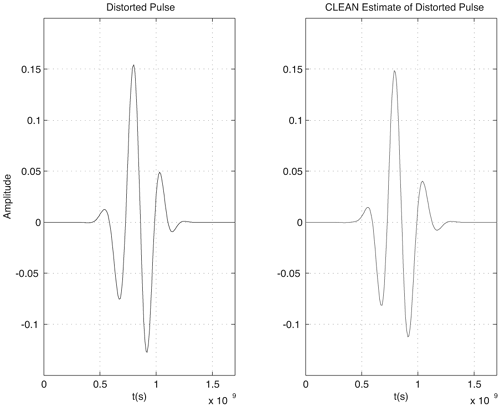 Figure 3.41. CLEAN Generated Impulse Response for Single Pulse Passing Through a Brick Wall.SOURCE: B. Donlan and R. M. Buehrer, "The UWB Indoor Channel: Large and Small-Scale Modeling," submitted to IEEE Transactions on Wireless Communications [73]. © IEEE, 2004. Used by permission. 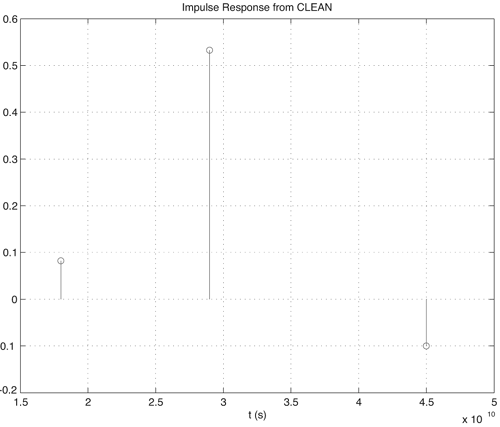 3.6.3. Impact of ReflectionsTo examine the impact of reflections, measurements were taken in an anechoic chamber to characterize the distortion caused by reflections from common shapes [72]. The "free-space" signal was used as the template, and the distorted pulse as the received signal, to run the CLEAN algorithm. In general, the CLEAN algorithm generates multiple taps to represent the distorted pulse. It behaves like an FIR filter to approximate the frequency distortion of the pulse. As a result, the CLEAN algorithm is accurate at regenerating the distorted pulse, although it will again create several "phantom paths." It is also noted that the angle of reflection also has a big impact on pulse distortion. The pulse reflected by the same material but at different angles can be quite different. As an example, consider a pulse reflected by a hemisphere [72]. The transmit and receive antennas were both pointed at the hemisphere to ensure that the hemisphere was in the boresight of both antennas. Additionally, nonreflected (that is, direct) paths were removed by taking a measurement without the hemisphere present. The received pulses without the reflection and with the reflection are plotted in Figure 3.42. The reflection causes two effects. First, it inverts the pulse. Second, it also rings at the resonant frequency of the sphere. As a result, the received pulse is followed by a slow oscillation. While the "true" CIR is a single path, CLEAN will attempt to model the ringing by introducing several "phantom paths" as shown in Figure 3.43. Additionally, there is a limit to how well CLEAN can represent the ringing. After a number of iterations, the CLEAN algorithm cannot improve the accuracy using shifted and scaled versions of the template pulse. The use of the discrete model introduces additional multipath components in other cases as well. For example, the pulse shape transmitted or received at various angles will be different from that observed on the boresite. If the boresite pulse shape is assumed for channel modeling as described earlier, it will also cause "phantom paths" to represent pulses arriving at angles other than the boresite. However, these paths will generally have less energy due to the reduced antenna gain in those directions [41, 72]. Figure 3.42. Signal Reflected by a Hemisphere.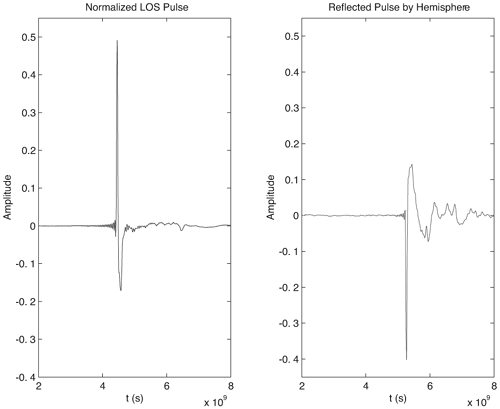 Figure 3.43. CLEAN-Generated Impulse Response for Signal Reflected by a Hemisphere.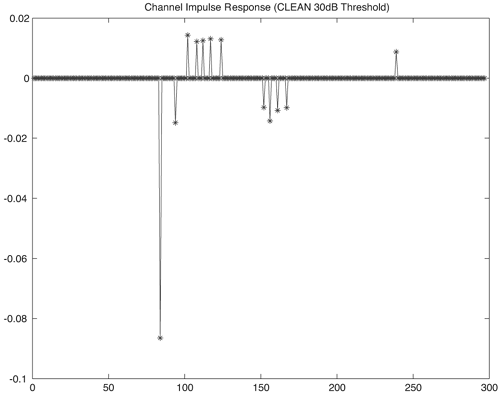 |
|
EAN: 2147483647
Pages: 110